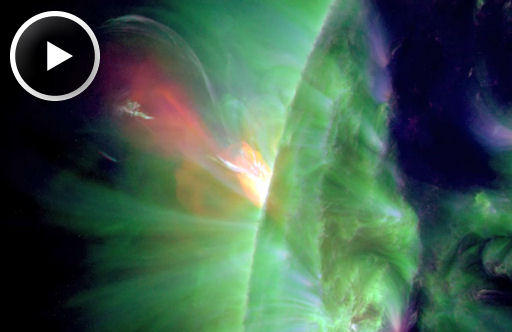ORIONID METEOR SHOWER: Next weekend, Earth will pass through a stream of debris from Halley's Comet, source of the annual Orionid meteor shower. Forecasters expect 25 meteors per hour when the shower peaks on Oct. 21st. [video] [full story]
LIGHTBULB ERUPTION: Sunspot AR1593, now emerging over the sun's northeastern limb, doesn't look very impressive. Yet two days ago it unleashed a very impressive eruption. NASA's Solar Dynamics Observatory recorded a glowing bulb of plasma more than 100,000 miles across on Oct. 14th:

The eruption occured while AR1593 was still on the farside of the sun, so Earth was not in the line of fire. Next time could be different. AR1593 will spend the next ~12 days facing our planet, setting the stage for geoeffective blasts if the sunspot erupts again. Stay tuned. Solar flare alerts: text, voice.